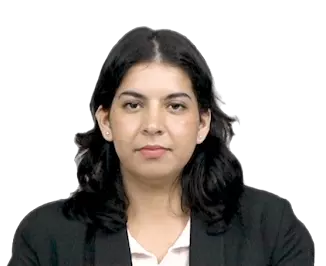- Home
- Medical news & Guidelines
- Anesthesiology
- Cardiology and CTVS
- Critical Care
- Dentistry
- Dermatology
- Diabetes and Endocrinology
- ENT
- Gastroenterology
- Medicine
- Nephrology
- Neurology
- Obstretics-Gynaecology
- Oncology
- Ophthalmology
- Orthopaedics
- Pediatrics-Neonatology
- Psychiatry
- Pulmonology
- Radiology
- Surgery
- Urology
- Laboratory Medicine
- Diet
- Nursing
- Paramedical
- Physiotherapy
- Health news
- Fact Check
- Bone Health Fact Check
- Brain Health Fact Check
- Cancer Related Fact Check
- Child Care Fact Check
- Dental and oral health fact check
- Diabetes and metabolic health fact check
- Diet and Nutrition Fact Check
- Eye and ENT Care Fact Check
- Fitness fact check
- Gut health fact check
- Heart health fact check
- Kidney health fact check
- Medical education fact check
- Men's health fact check
- Respiratory fact check
- Skin and hair care fact check
- Vaccine and Immunization fact check
- Women's health fact check
- AYUSH
- State News
- Andaman and Nicobar Islands
- Andhra Pradesh
- Arunachal Pradesh
- Assam
- Bihar
- Chandigarh
- Chattisgarh
- Dadra and Nagar Haveli
- Daman and Diu
- Delhi
- Goa
- Gujarat
- Haryana
- Himachal Pradesh
- Jammu & Kashmir
- Jharkhand
- Karnataka
- Kerala
- Ladakh
- Lakshadweep
- Madhya Pradesh
- Maharashtra
- Manipur
- Meghalaya
- Mizoram
- Nagaland
- Odisha
- Puducherry
- Punjab
- Rajasthan
- Sikkim
- Tamil Nadu
- Telangana
- Tripura
- Uttar Pradesh
- Uttrakhand
- West Bengal
- Medical Education
- Industry
Are cancer surgeries unknowingly eliminating the body's natural defense against cancer? Study sheds light - Video
Overview
Scientists from the Peter Doherty Institute for Infection and Immunity have uncovered vital roles of lymph nodes in fighting persistent infections and cancer by orchestrating stem-like T cell activity.
Published in Nature Immunology, these findings reveal that lymph nodes create an optimal environment for stem-like T cells to survive, proliferate, and generate "killer" T cells that attack viruses and tumors.
Lymph nodes play vital roles in fighting persistent infections and cancer by serving as specialized hubs that support and orchestrate stem-like T cell activity. These immune organs provide an optimal environment for stem-like T cells—a crucial subset of immune cells—to survive, multiply, and differentiate into highly effective "killer" T cells that target viruses and tumors. Unlike other organs, such as the spleen, lymph nodes actively train and prepare these T cells, enhancing the body’s immune defenses.
The study used animal models to examine how lymph nodes regulate immune cell dynamics, tracking molecular signals that control stem-like T cells and their differentiation into effector cells. Researchers emphasized that removing lymph nodes during cancer surgery—a common practice to prevent tumor spread—might impair immunotherapy effectiveness, such as checkpoint blockade or CAR T cell treatments. Preserving lymph nodes could enhance immune responses and improve treatment outcomes.
Professor Axel Kallies, senior author, stated, “Lymph nodes aren’t just passive waiting rooms; they actively train T cells to fight disease.” First author Dr. Carlson Tsui added that therapies should focus on maintaining and boosting lymph node function to harness natural immunity more effectively.
This research explains why some patients respond better to immunotherapies, linking lymph node health with the body's ability to produce cancer-fighting T cells. Clinical collaborations aim to translate these discoveries into patient care, potentially revolutionizing cancer treatment by incorporating lymph node preservation and targeted immune activation strategies.
Reference:
1.Carlson Tsui, et.al.; etLymph nodes fuel KLF2-dependent effector CD8 T cell differentiation during chronic infection and checkpoint blockade. Nature Immunology, 2025; 26 (10): 1752 DOI: 10.1038/s41590-025-02276-7
2.Sharanya K. M. et.al.; Lymph-node-derived stem-like but not tumor-tissue-resident CD8 T cells fuel anticancer immunity. Nature Immunology, 2025; 26 (8): 1367 DOI: 10.1038/s41590-025-02219-2



